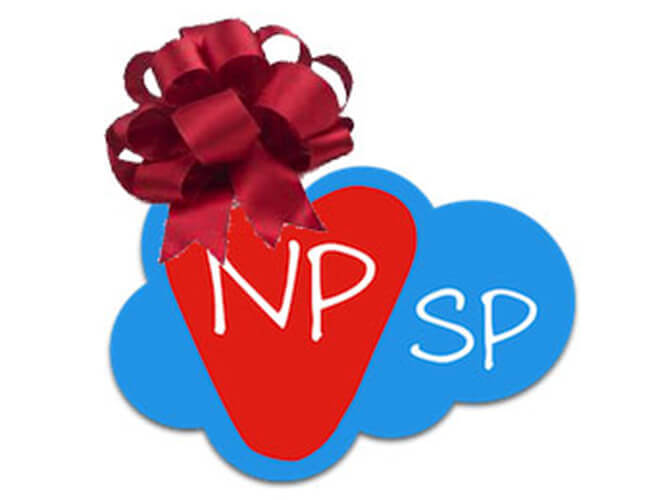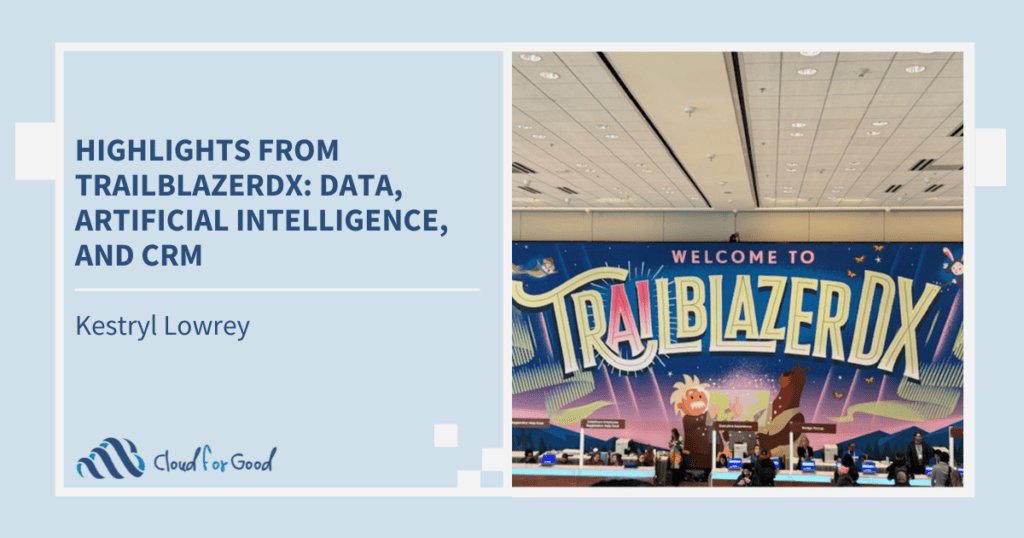It’s like Christmas morning in the Salesforce for nonprofits space, as the Foundation and its development team play Santa and deliver a much anticipated gift to the community. No, not a Red Ryder BB gun or an iPhone 6, but Cumulus, the exciting new update to the Nonprofit Starter Pack (NPSP) (for more details on what Cumulus is, and why you should be excited, check out my colleague Paige Van Riper’s post here).
NPSP v3, as it’s known among the cooler kids, is generally available now, both in new Salesforce Nonprofit trial organizations and as an upgrade for existing NPSP orgs (visit the Installer page on the Power of Us Hub for more details). Why does the upgrade put the awesome in the sauce? Two of the biggest reasons are its new data architecture and the vastly simplified and improved administrative features.
A positive accounting for Households
For months, maybe even years, most good kids (as well as some naughty ones) have been asking for a better data model than the options available in NPSP version 2. Many of us have been making do with the one-to-one account model and its separate Households and Affiliations to try to manage our constituents, and it’s never quite thrilled us. The Bucket model, where individuals who have no Organizational affiliations get lumped into a single Account, was an even less satisfying alternative. We asked as plaintively as we could, “Why not simply track Households as Accounts instead?”
Ask no more. NPSP v3 now offers a third Account model, and it’s that very Household Account model for which we’ve been pining. With it, Households are no longer tracked in a custom object, but are a separate type of Account with its own page layout and some well-tailored functionality. This simplifies donation reporting quite a lot, among other benefits.
The Household Account model has been endorsed by the Foundation as the best-practice option, and a number of the new features in v3 will only work with that choice, in case you needed more convincing to embrace it.
What about that slick drag-and-drop interface v2 had for managing Household members and addresses? Are we going to lose that in the upgrade? Nope. It’s all still there and now works with the Household Accounts as well as the old Households custom object. Thanks to a simple (and optional) override of the Edit button on the Account Details page, you can access these user-friendly features for organizing your Household information, and it’s coded to be able to distinguish between Organization and Household type Accounts.
For new organizations, the choice of Account model will and should be a no-brainer. For existing NPSP users, the choice is a little more complicated. You should absolutely switch, but the change is going to require effort on your part (or on the part of your friendly, neighborhood Salesforce consulting partner, who in this extended bad metaphor, you can consider the elves). The upgrade to Cumulus is fully backward compatible with the old account models, and shouldn’t adversely impact your data in any way, but converting from One-to-One or Bucket to Households is an irreversible, and non-trivial operation.
The Foundation provides a tool called the Account Model Conversion Utility (you can get the tool here, and more details about the Account model options are available here on the Foundation’s Power of Us Hub) to help ease this transition, but using it still requires Salesforce expertise, and you’ll want to test everything thoroughly in a Sandbox before trying it out on your live data.
‘Tis the seasonal addresses
Another great enhancement in NPSP v3 is the new Address management functionality. Again, this is the Foundation delivering something the community has been clamoring for. With v3, you’ll no longer be limited to just the Billing and Shipping addresses that come standard with Salesforce Accounts.
The Foundation development team has created a new Address custom object that not only allows you to store multiple addresses and designate which of them is current, but also includes the ability to set seasonal date ranges. It’s also designed to automatically keep the Household members’ current address in sync with the Account’s.
Note that this is one of those really great new features I mentioned that’s only available if you switch to the Households Account model, and it only works for the Household type Accounts, not Organizations. The Foundation could change that, based on community feedback, so if you’d like to see the new multiple address functionality extended to Organization Accounts, make sure to log your use-cases on the Hub.
One other neat address-related enhancement included in v3 is support for address verification. With this functionality you can verify, standardize and geocode addresses, and it even pulls county name and congressional district.
Other fun data bits included in this package
The Foundation team has made several other less dramatic, but very useful improvements to the way your data is managed in v3.
- Users now have much finer control over Household naming conventions, as well as the Formal and Informal greetings.
- Users can specify a primary Organizational Affiliation for their Contacts.
- Users can specify a primary Contact for each Organization.
- Users can choose more than one Donation (Opportunity) Record Type to be used by the Membership-related triggers.
- There are additional roll-ups for Donations/Opportunities.
For the Geekier Kids
NPSP v3’s gifts aren’t exclusive to those working with data. There are also some big enhancements for Administrators.
The most notable of these changes is the new consolidated Settings tab. No more clicking through multiple pages to configure the application settings! They’re all now in one central location, and it includes a lot more descriptive information about what the settings do. David Habib at the Foundation gives a nice overview of the improvements in this Youtube video.
In the System section of the new Settings tab, you’ll find a few other nice surprises. Health Check is a quick and easy way to troubleshoot and address common configuration errors. Press a button, and v3 will check for problems and notify you of both what’s wrong and how you might fix it. There’s also a new Error Log that displays any NPSP-related system errors you might get from the Recurring Donations or Opportunity rollup batch jobs.
For the code savvy, NPSP v3 also offers new Table Driven Trigger Management in the System section. This feature allows you to more easily disable the NPSP-based triggers, and control the order in which they run. It also makes it easier to extend those triggers with new code.
There’s much more information about all of the enhancements, and the NPSP in general, on the Nonprofit Starter Pack 3.0 Documentation page. You should also join the Nonprofit Starter Pack Group at the Hub to be part of the continuing conversation around the app.
Now that I’ve got you all excited, stay tuned for a dose of day-after-Christmas sobriety next week when Kestryl Lowery explains the technical considerations you should keep in mind when upgrading.





